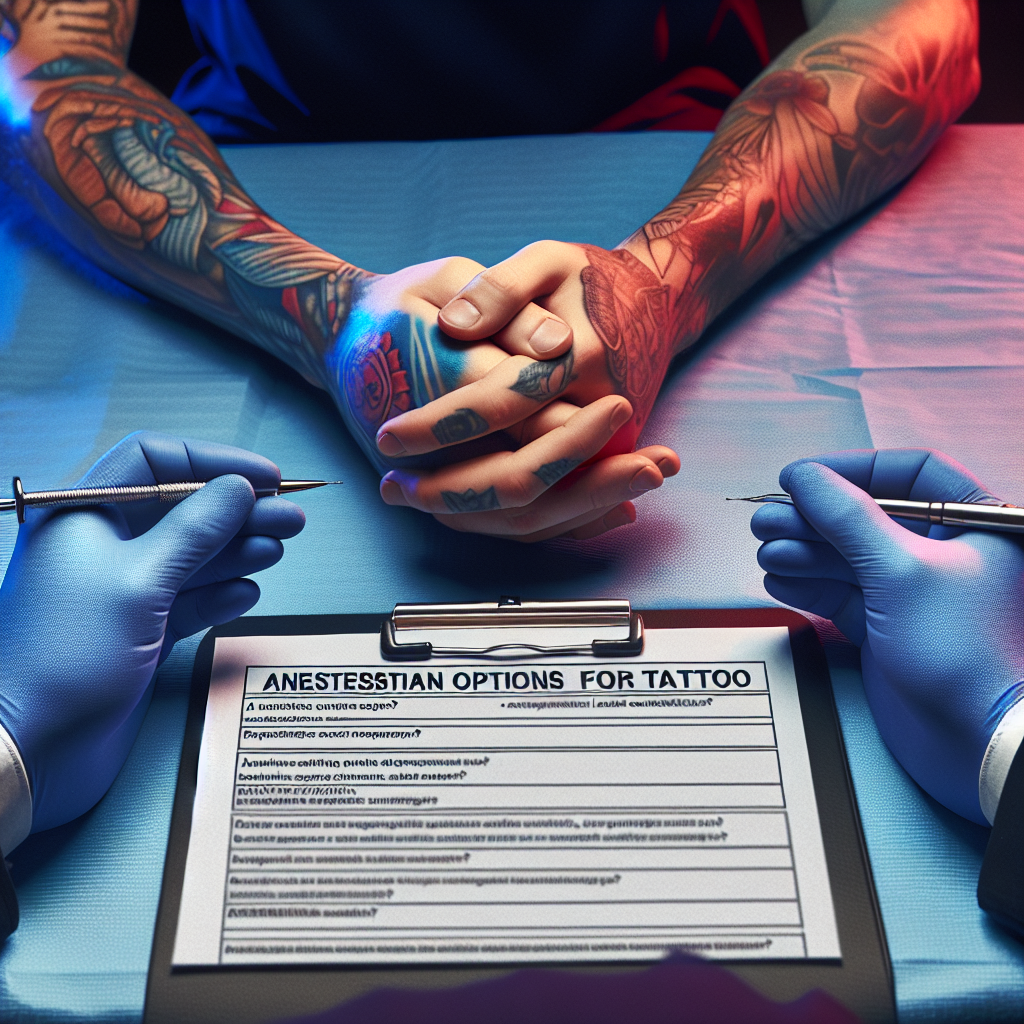The Ultimate Guide to Anesthesia Options for Getting a Tattoo4 min read

Getting a tattoo can be an exciting experience, but many people worry about the pain involved. While some discomfort is inevitable, there are various anesthesia options available to help minimize the pain during the tattooing process. In this comprehensive guide, we’ll explore the different types of anesthesia that can be used for tattoos, including their effectiveness, safety considerations, and legal aspects.
Local Anesthetic Options for Tattoos
Local anesthetics are the most common type of pain management used for tattoos. These medications work by temporarily numbing the specific area being tattooed, reducing the sensation of pain. Here are some of the most popular local anesthetic options:
Topical Numbing Creams
Topical numbing creams, such as lidocaine or benzocaine, can be applied to the skin before the tattoo session begins. These creams work by blocking nerve signals in the superficial layers of the skin, providing a temporary numbing effect. While they can help reduce pain, their effectiveness may vary depending on the individual and the location of the tattoo.
Injectable Anesthetics
In some cases, tattoo artists may use injectable anesthetics like lidocaine to numb the area more deeply. This method involves injecting the anesthetic directly into the skin using a fine needle. Injectable anesthetics tend to be more effective than topical creams, as they can penetrate deeper into the skin layers. However, they also carry a higher risk of complications and should only be administered by trained professionals.
Safety Concerns and Legal Considerations
While anesthesia can help make the tattooing process more comfortable, it’s essential to consider the safety aspects and legal implications involved. Here are some key points to keep in mind:
Potential Side Effects and Risks
Anesthetics, whether topical or injectable, can cause side effects such as allergic reactions, skin irritation, or in rare cases, more severe complications. It’s crucial to discuss any allergies or medical conditions with your tattoo artist and a healthcare professional before using any type of anesthetic.
Legal Regulations and Artist Training
The use of anesthetics in tattoo studios is subject to legal regulations that vary by country and state. In many jurisdictions, tattoo artists are not permitted to administer injectable anesthetics unless they have received proper medical training and licensing. It’s important to choose a reputable tattoo studio that adheres to all relevant laws and safety guidelines.
Alternative Pain Management Methods
In addition to anesthetics, there are other pain management techniques that can help make the tattooing experience more comfortable. These include:
- Breathing exercises and meditation to promote relaxation
- Distracting yourself with music, conversation, or other activities
- Taking breaks during longer tattoo sessions to rest and recharge
- Ensuring proper aftercare to minimize discomfort during the healing process
Frequently Asked Questions
Can I bring my own numbing cream to the tattoo studio?
It’s generally not recommended to bring your own numbing products to a tattoo session. Tattoo artists prefer to use products they are familiar with and have vetted for safety and effectiveness. Discuss any concerns about pain management with your artist beforehand, and they will advise you on the best approach.
Is anesthesia safe for all types of tattoos?
The safety of anesthesia can vary depending on the type and location of the tattoo. Smaller, less detailed tattoos may not require anesthesia at all, while larger or more intricate designs may benefit from it. Your tattoo artist will assess your individual needs and recommend the most appropriate pain management method for your specific tattoo.
How long does the numbing effect last?
The duration of the numbing effect depends on the type of anesthetic used. Topical creams typically provide numbing for 30 minutes to an hour, while injectable anesthetics can last several hours. Keep in mind that as the anesthetic wears off, you may start to feel more discomfort, so it’s essential to have a plan for managing pain after the tattoo session.
Conclusion
Getting a tattoo doesn’t have to be an excruciating experience. By understanding the various anesthesia options available, you can make an informed decision about pain management during your tattoo session. Whether you opt for topical numbing creams, injectable anesthetics, or alternative methods like breathing exercises, the key is to prioritize safety and work closely with your tattoo artist to ensure a positive and comfortable experience.
Remember, while anesthesia can help reduce pain, it’s not a complete solution. Some level of discomfort is still expected, and it’s essential to approach the tattooing process with realistic expectations. By choosing a reputable artist, communicating openly about your concerns, and following proper aftercare instructions, you can minimize pain and achieve the beautiful, long-lasting tattoo you desire.
